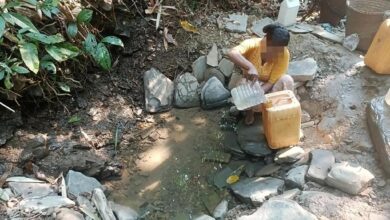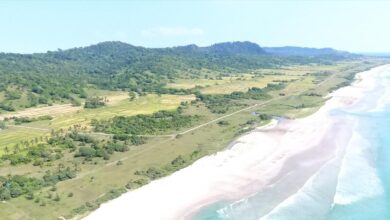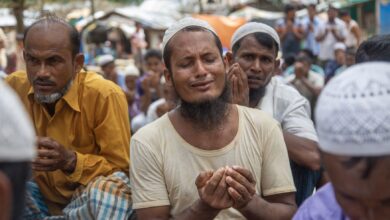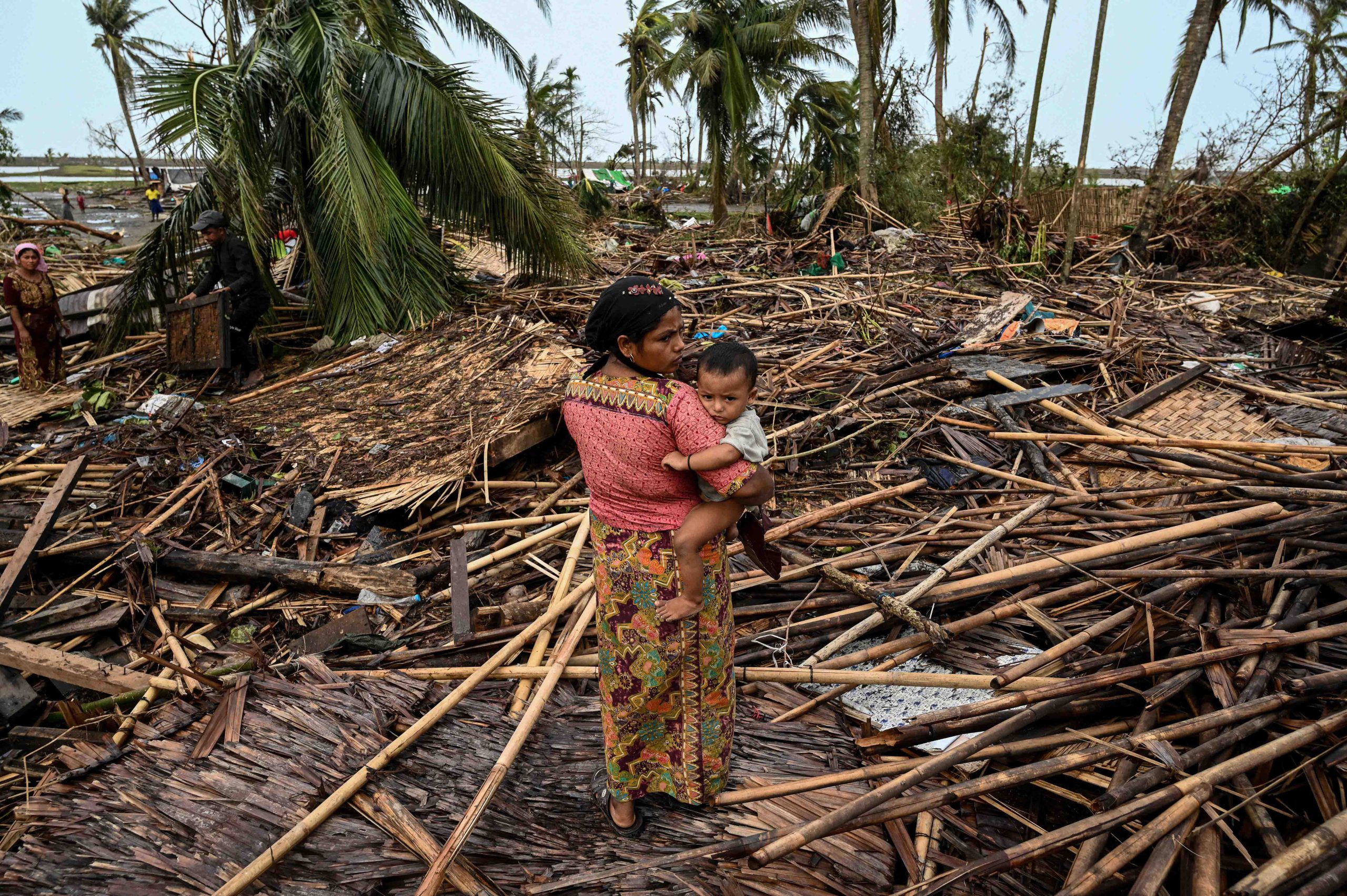
BU MAY, RAKHINE STATE – Sitting on a square cement slab, one of the last intact structures in the fishing village of Bay Dar near the Bay of Bengal, 40-year-old Maung Sein painfully takes in his surroundings.
Everywhere is cluttered with the wreckage of what was a monstrous storm: woven bamboo walls now tangled with branches, fishing nets and clothing, debris where houses once stood.
Maung Sein lost his 27-year-old wife, who was five months pregnant, his four-year-old child, and his mother- and brother-in-law when Cyclone Mocha made landfall on Sunday in Sittwe, Rakhine State, destroying 90 percent of homes in the state capital.
Together, they ran from waves that towered over them, powered by winds reaching more than 130 miles per hour. Everyone but Maung Sein was killed.
“I have never seen something like this before. I didn’t think it would be that strong, either… Big waves came with the wind,” he recounted. “The waves became bigger and bigger and swept us away.”
As of Tuesday, he was still unable to locate the body of his child.

Maung Sein was not alone in his grief. The 450-household village of Bay Dar, also known as Bawgadip and located in Bu May village tract, is home to some 3,000 members of Myanmar’s persecuted Rohingya Muslim minority. Many residents of the community, just three miles west of the state capital of Sittwe, also reported losing family members to the cyclone, whose total death toll is not yet known.

Dead bodies believed to belong to local Rohingya continued to be seen floating along the coast of Rakhine State as of Wednesday. Junta chief Min Aung Hlaing claimed in a statement on military-controlled media on Tuesday that the country had endured Cyclone Mocha with a minimal loss of life, citing 21 casualties and making no mention of the plight of the Rohingya.
Yet hundreds of people are missing and feared dead as flooding surged in coastal camps housing some 140,000 Rohingya internally displaced persons (IDPs). Many were forced to flee their homes in the area more than 10 years ago by the same military under Min Aung Hlaing’s command. Since then, even with their own residences often located within a few miles of the camps, they have been forcibly confined to these sites, reliant on rations and without freedom of movement or recognised citizenship, living in bamboo huts particularly vulnerable to natural disasters.
Yet despite this known vulnerability, local sources including camp administrators, journalists and volunteers told Myanmar Now that meaningful efforts had not been undertaken by the military council or international aid agencies to evacuate the IDPs from the camps or prepare them for the severity of the cyclone before it hit. Cyclone warnings over area loudspeakers were delivered in Burmese language, which many Rohingya in the area do not speak, and, even if the more than 100,000 Rohingya IDPs had opted to evacuate, the military had no plan in place to transport or accommodate this number of people—particularly those from a community it has marginalised and repressed for generations in what many have termed an ongoing genocide.
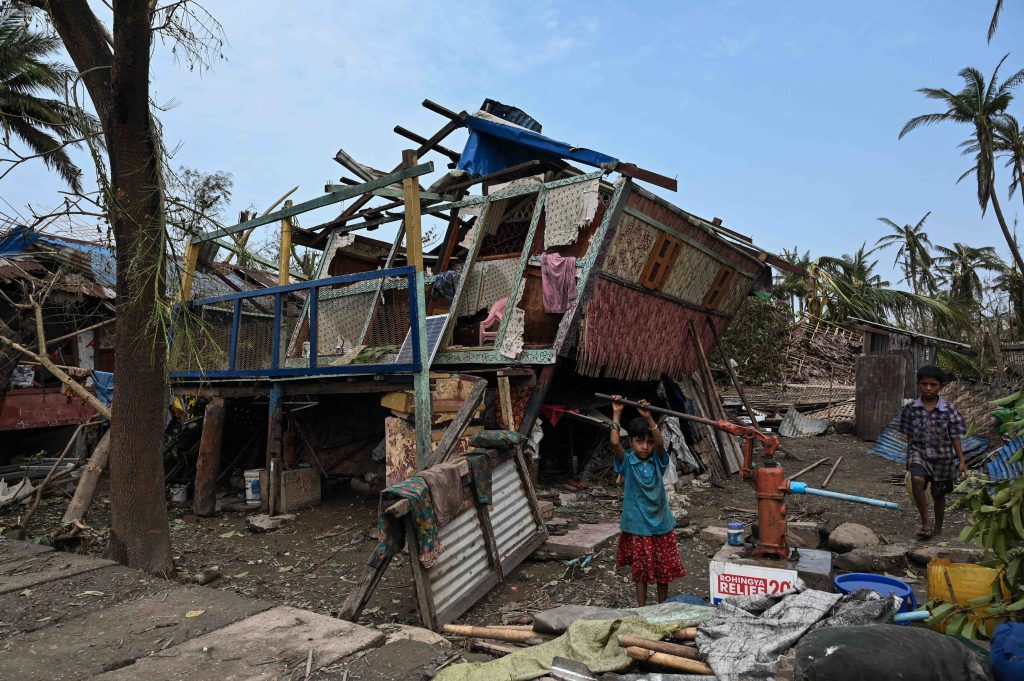
The military claimed in its media mouthpieces on Tuesday that their authorities had relocated 23,000 locals across Rakhine State to cyclone shelters and more than 62,000 people from IDP camps to safety. Some 600,000 people had reportedly moved on their own—mostly ethnic Rakhine Buddhists—taking shelter in monasteries, schools or community halls.
As of Tuesday—two days after the storm struck—the UN Office for the Coordination for Humanitarian Affairs (OCHA) said that it was still waiting for the junta’s permission to start carrying out the required needs assessments that serve as a prerequisite for aid delivery.
“There are local reports of possible deaths and of people being missing, including IDPs. The UN and its partners are working to start rapid needs assessments as soon as access is granted to better understand the impact of the disaster. Negotiations for access are ongoing,” UN OCHA said in a statement.
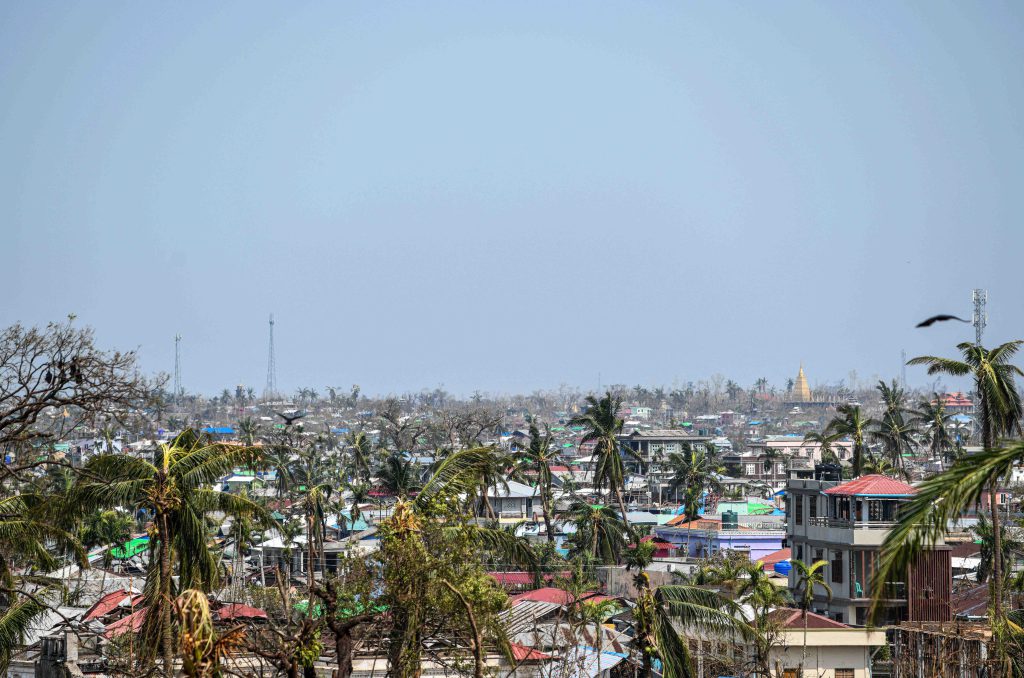
Survivors in Bu May village tract who spoke to Myanmar Now described being in urgent need of shelter, medical treatment, food and drinking water. According to a list collated by an administrator from one of the 12 Rohingya Muslim communities in the tract, 58 people were confirmed as having been killed, 32 of whom were women.
Myanmar Now visited Bay Dar and another village, Basare, on Tuesday, learning that most of those who died had drowned during a tidal surge that followed the cyclone’s initial landfall, swept away by unprecedented waves like those Maung Sein described.
Basare’s administrator, Rawshid, said from his village alone, six women, two girls under age 10 and two men were killed.
It was only when the floodwaters were knee-deep that residents tried to flee to the nearby Sittwe Airport, but by that point, it was too late, he recalled.
“Many fell down in water when the wind blew intensely and carried them away.”

One of the victims was identified as 25-year-old Zubi, who drowned along with her four children while trying to outrun the waves.
“My sister was holding her four children and she fell. I was not able to pull her up,” her 18-year-old brother, Kyaw Hla Sein, said.

He said that villagers had heard about the storm approaching Rakhine but were not informed about the danger, nor the speed of the winds before it struck. They were told to evacuate to safer places, but it was not explained why, he added. They were also concerned that by leaving, they would lose the little personal property that they had.
Multiple survivors from Bu May village tract told Myanmar Now that by the time they realised the severity of Cyclone Mocha, it was too late to flee.
Chit Swe, a resident from Ward 10 in Bu May, said that he personally witnessed the deaths of eight people as the storm swallowed his community.
“There was no place left for us to relocate to. There were no more storm shelters. No one expected that it would be this bad, so we stayed in our own homes. No one would have died if we were not forced to stay in our homes,” he said.
For Maung Sein, who lost his wife, child and in-laws, he is still wondering why he, and not the rest of his family, lived through the deadly storm.
“Only Allah will have an answer as to how I survived.”
Reporting by Poe-U and Myo Tun.

